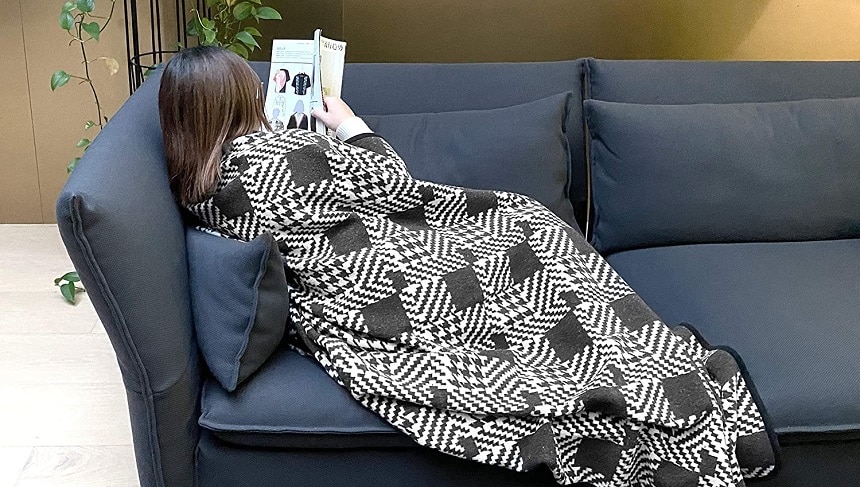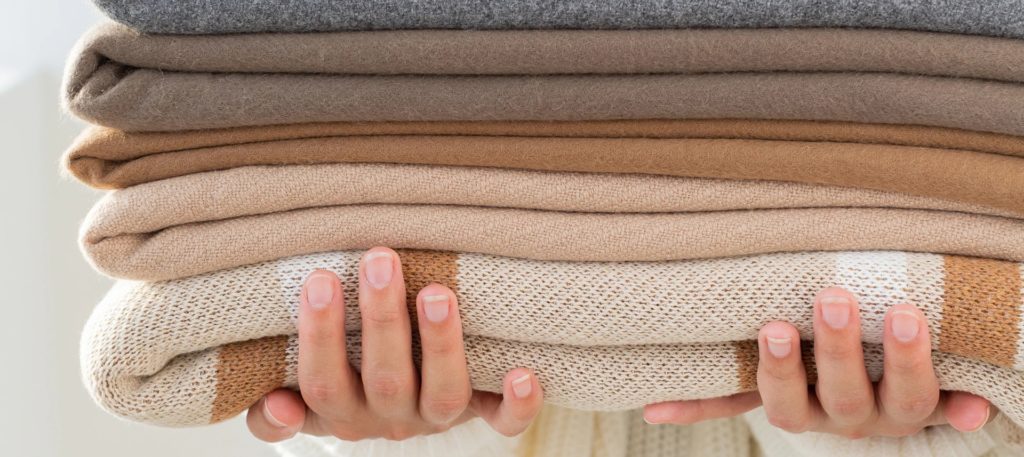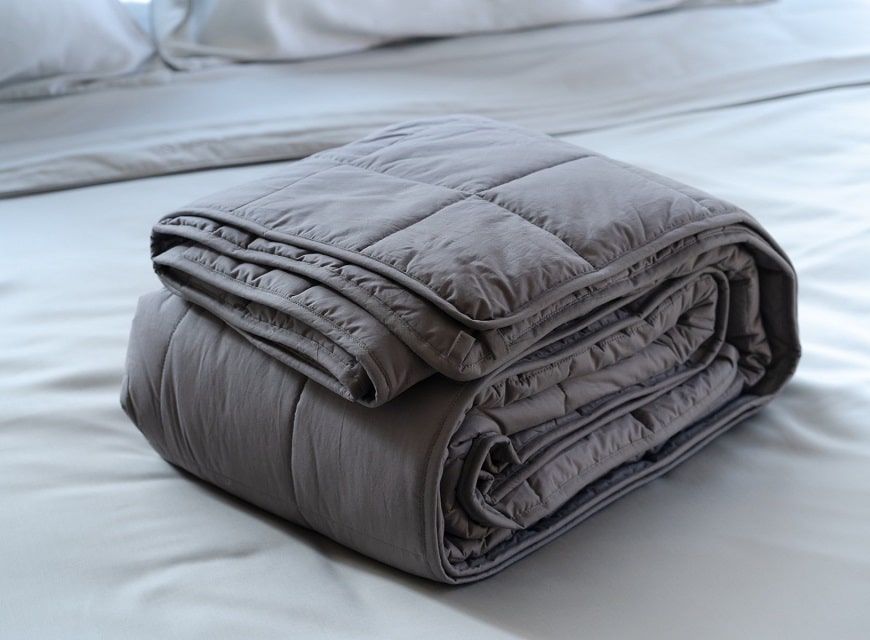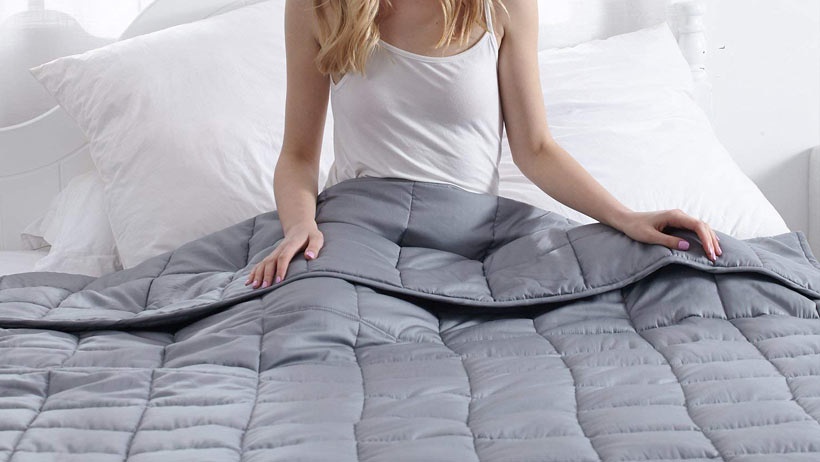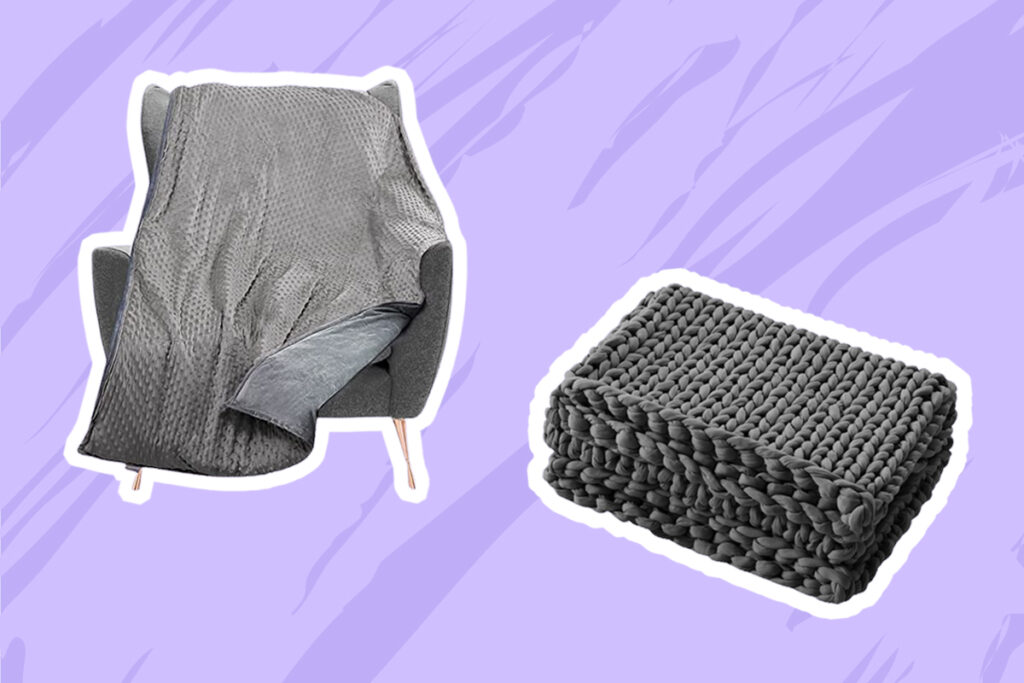

If you often find it difficult to fall asleep and are tired of feeling weightless at night, you don’t need to worry. All you need is a cozy weighted blanket to keep you warm and snug. A weighted blanket is a perfect cure for nighttime anxiety and insomnia. Weighted blankets feel like a warm hug consuming you in a cozy embrace. They work great for restless sleepers, individuals with special needs, and even for those who live in areas that experience extremely cold and long winters. Wondering how to make a weighted blanket for yourself? We have the answer for you!
You can easily ‘DIY’ your own weighted blanket instead of spending large amounts of money buying one. The utility of weighted blankets goes so far that specialists recommend weighted blankets to people who suffer from sensory processing disorders.
This easy guide on how to make a weighted blanket at home is extremely simple to follow.
Weighted blankets are pretty much what the name says; blankets that are weighted with extra weight. To tell weighted blankets apart from other kinds of blankets, you can simply check how heavy they are. Weighted blankets often weigh far heavier than other blankets because they have tiny weighted objects, known as fillers, sewn into the lining of the blanket.
These objects may consist of small glass beads or steel beads, and even rice, beans, and dried pasta depending on preference, convenience, and availability of fillers. Just like summer blankets, weighted ones don’t have lighter or heavier sides because fillers’ weight is evenly distributed all over the blanket. Even distribution requires fillers to be sewn in pockets all over the blanket.
Weighted blankets have several benefits for people with different health conditions. They have beneficial implications for people who suffer from developmental disorders, such as Autism Spectrum Disorder and Attention Deficit and Hyperactivity Disorder, as well as mood and emotion disorders, like Anxiety and Stress disorders.
Weighted blankets also work wonders to improve sleep for people suffering from sleep disorders like insomnia and physical health conditions like chronic pain and osteoarthritis.
Children and adults with autism find it difficult to fall asleep and have a restful night’s sleep. Research suggests that weighted blankets have proven useful in improving sleep scores for sleep issues related to autism.
Weighted blankets include the benefits of deep pressure therapy that is a common treatment for autistic individuals.
Research has indicated a positive correlation of weighted vest therapy in improving attention span and reducing hyperactivity in ADHD persons. The promising benefits of weighted vest therapy can be extended to weighted blankets as well.
Weighted blankets are often used and highly recommended for treating anxiety. The pressure and weight of these blankets is similar to the effects of deep pressure stimulation that helps in the reduction of autonomic arousal, consequently reducing feelings of anxiousness and heart palpitations.
People suffering from insomnia find it difficult to fall asleep and sleep through the night. Insomnia is a common symptom of Autism and ADHD. Weighted blankets have promising results Percale materials are plain and closely-woven Trusted Source The Washington Post — Weighted blankets might ease insomnia and anxiety. Here’s what to know before buying one. If 2017 was the year of the Instant Pot, 2018 was the year to gift or get a weighted blanket — a duvetlike bed cover weighing from five to 25 pounds. www.washingtonpost.com when it comes to the reduction of sleep onset time and the number of nighttime awakenings.
There is no direct link between the utility of weighted blankets and health issues like osteoarthritis and chronic body aches. Weighted blankets apply pressure to problem areas like arthritic joints in a similar fashion as massage therapy. Also, they provide greater comfort by applying pressure to problem areas and painful spots, resulting in better sleep quality, which proves to be useful if you sleep without a pillow.
You need to take some initial measures before you start stitching a DIY weighted blanket. You must gather the necessary supplies that include the following tools and materials:
Before you begin sewing a weighted blanket, it is vital to plan the size and weight of the blanket you desire. A weighted blanket does not have to be the same size as a large-sized comforter. Make sure that the size you have in mind covers the whole body size of the intended user.
Keep in mind that sewing fillers into squares require extra fabric. These filled sections can be anywhere from 3 to 5 square inches. Therefore the overall fabric measurements must equal the size of your squares multiplied by an additional 4 inches for the edges.
A weighted blanket must essentially weigh 10% of the intended user’s body weight. Thus, you must determine the weight of the blanket you make.
Now you will determine what kind of fillers you want to use. Weight can be added to weighted blankets using mainly two kinds of fillers; synthetic and natural. You can consider the features of all kinds of fillers to determine which one will be best suited to your requirements and personal preferences.
Synthetic Fillers:
Natural Fillers:
Once you have determined the weight and size of the blanket you want to stitch and decided on a filler to use, you can start making the blanket.
Using a tailor’s chalk, mark 2 inches on edge from each side of the fabric. Once the edges are marked, start marking each square according to the size you selected. Sew the front and back together from the right side that will face outwards. Leave a ⅜ inch seam allowance in case you require corrections later. Now close the blanket by sewing the two larger sides and one shorter side together, leaving only one side open.
Now turn the blanket, so the right side is out. Topstitch 1/4 inch from the edge, beginning and stopping an inch from the opening. Now start 2 inches after the opening and sew along the lines you marked earlier that were at a 2-inch distance from the fabric’s edge. Sew the bottom and the longer sides. Finally, backstitch the beginning and end to achieve a grid of squares on the inner topstitching.
Mark vertical lines and sew all the vertical channels in the fabric. Start from the closed bottom edge, over the line of stitching that is roughly 2 inches apart from the inner topstitching. Stop stitching at the top from the 2-inch marking. Don’t forget to backstitch at the beginning and the end.
A useful tip is to start at the center and stitch the next lines close to the center of these marked sections. This will help keep you from getting lost and prevent the fabric from untidy bunching.
Weigh the fillers according to your earlier measurements for each square and fill the vertical channel. Shake the beads gently to evenly distribute them in the channel.
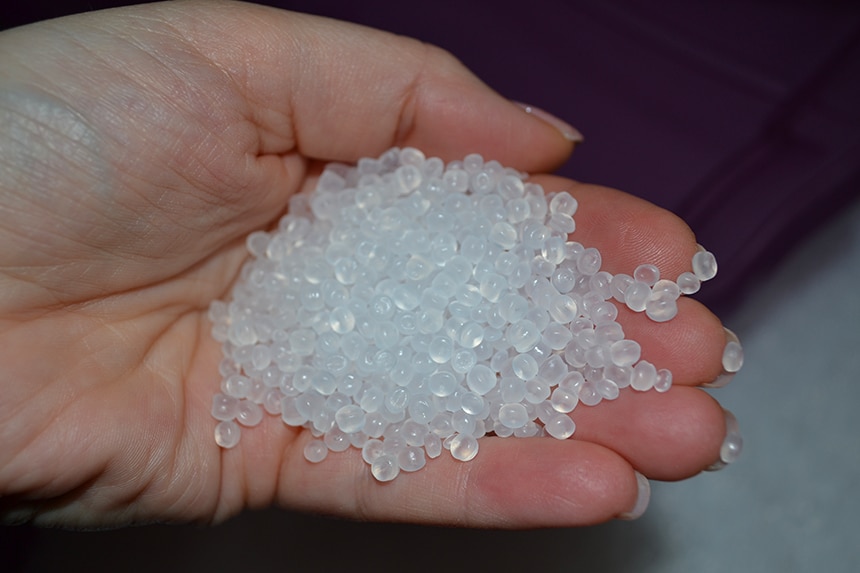
Using the pins, you gathered before, make a straight line to keep the beads away from the horizontal line. Begin sewing the horizontal line over the 2-inch stitching from the inner topstitch and stop at the topstitch of the other end. Backstitch on both sides to reinforce the stitch. Continue filling the remaining vertical sections and sewing horizontally for the remaining marked lines, and make sure to support the weight of the blanket to avoid pulling your stitches.
Once you are finished filling and stitching the horizontal lines, sew the final row of cubes to close them. These stitches must align with the inner topstitching and overlap them slightly. Finally, fold the edges by half an inch of the open side and topstitch from ¼ inches of the edge, starting and stopping where the topstitching ends on each side.
Yes, weighted blankets require cleaning from time to time, and they can be washed. Blankets with plastic poly pellet fillers can easily be machine washed at home. However, blankets with dried beans and steel beads must not be machine washed. For large-sized weighted blankets, you will need a washing machine big enough to accommodate it. Therefore it is best to take them to the laundromat. Also, be careful when washing blankets heavier than 10 pounds. It is recommended to get them dry cleaned instead of machine washing.
Weighted blankets are great for several ailments and disorders common in children. However, they are extremely unsuitable for babies under the age of two years. You must never cover a baby with a weighted blanket because their bodies are still underdeveloped to support a weighted blanket’s pressure. It can prove extremely hazardous because babies will not be able to move under the weight of the blanket, plus there is a high risk of suffocation and physical injury.
It is always fun to do a ‘DIY’ project for your favorite items. Making a weighted blanket yourself will not only be an exciting project, but it will also result in great satisfaction once you have completed it.
Making a weighted blanket can be a way to reflect your creativity and incorporate your artistic expression, adding colors, patterns, and designs of your choice. You can choose a filler of your choice and the fabric you like most, which is not always easy when buying a ready-made weighted blanket.
One of our favorite picks on the market is Waowoo Adult Weighted Queen Size Blanket, which comes in a beautiful dark gray color that complements most room interiors and bedsheet patterns, and has high-quality premium glass bead filling.
We love learning about other people’s DIY weighted blanket-making techniques as much as we like telling about our own. So feel free to let us know any useful insights or tips that you use for making a weighted blanket!

